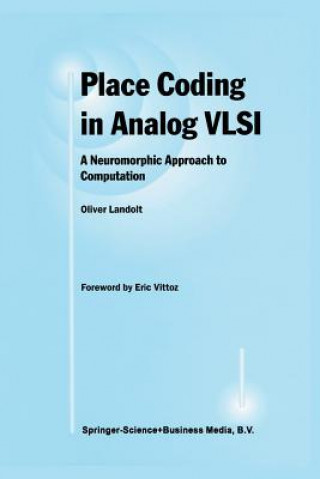
Kézbesítés
Vásárlási tanácsadó





Nem vált be? Semmi gond! Nálunk 30 napon belül visszaküldheti
 Ajándékutalvány
bármilyen értékben
Ajándékutalvány
bármilyen értékben
Ajándékutalvánnyal nem nyúlhat mellé. A megajándékozott az ajándékutalványért bármit választhat kínálatunkból.
Place Coding in Analog VLSI
 Angol
Angol
 467 b
467 b
30 nap a termék visszaküldésére
Ezt is ajánljuk


Neurobiology research suggests that information can be represented by the location of an activity spot in a population of cells (`place coding'), and that this information can be processed by means of networks of interconnections. Place Coding in Analog VLSI defines a representation convention of similar flavor intended for analog-integrated circuit design. It investigates its properties and suggests ways to build circuits on the basis of this coding scheme. §In this electronic version of place coding, numbers are represented by the state of an array of nodes called a map, and computation is carried out by a network of links. In the simplest case, a link is just a wire connecting a node of an input map to a node of an output map. In other cases, a link is an elementary circuit cell. Networks of links are somewhat reminiscent of look-up tables in that they hardwire an arbitrary function of one or several variables. Interestingly, these structures are also related to fuzzy rules, as well as some types of artificial neural networks. The place coding approach provides several substantial benefits over conventional analog design: §Networks of links can be synthesized by a simple procedure whatever the function to be computed. §Place coding is tolerant to perturbations and noise in current-mode implementations. §Tolerance to noise implies that the fundamental power dissipation limits of conventional analog circuits can be overcome by using place coding. §The place coding approach is illustrated by three integrated circuits computing non-linear functions of several variables. The simplest one is made up of 80 links and achieves submicrowatt power consumption in continuous operation. The most complex one incorporates about 1800 links for a power consumption of 6 milliwatts, and controls the operation of an active vision system with a moving field of view. §Place Coding in Analog VLSI is primarily intended for researchers and practicing engineers involved in analog and digital hardware design (especially bio-inspired circuits). The book is also a valuable reference for researchers and students in neurobiology, neuroscience, robotics, fuzzy logic and fuzzy control.
Információ a könyvről
 Angol
Angol
Kategória




 Hogyan vásároljunk
Hogyan vásároljunk






















